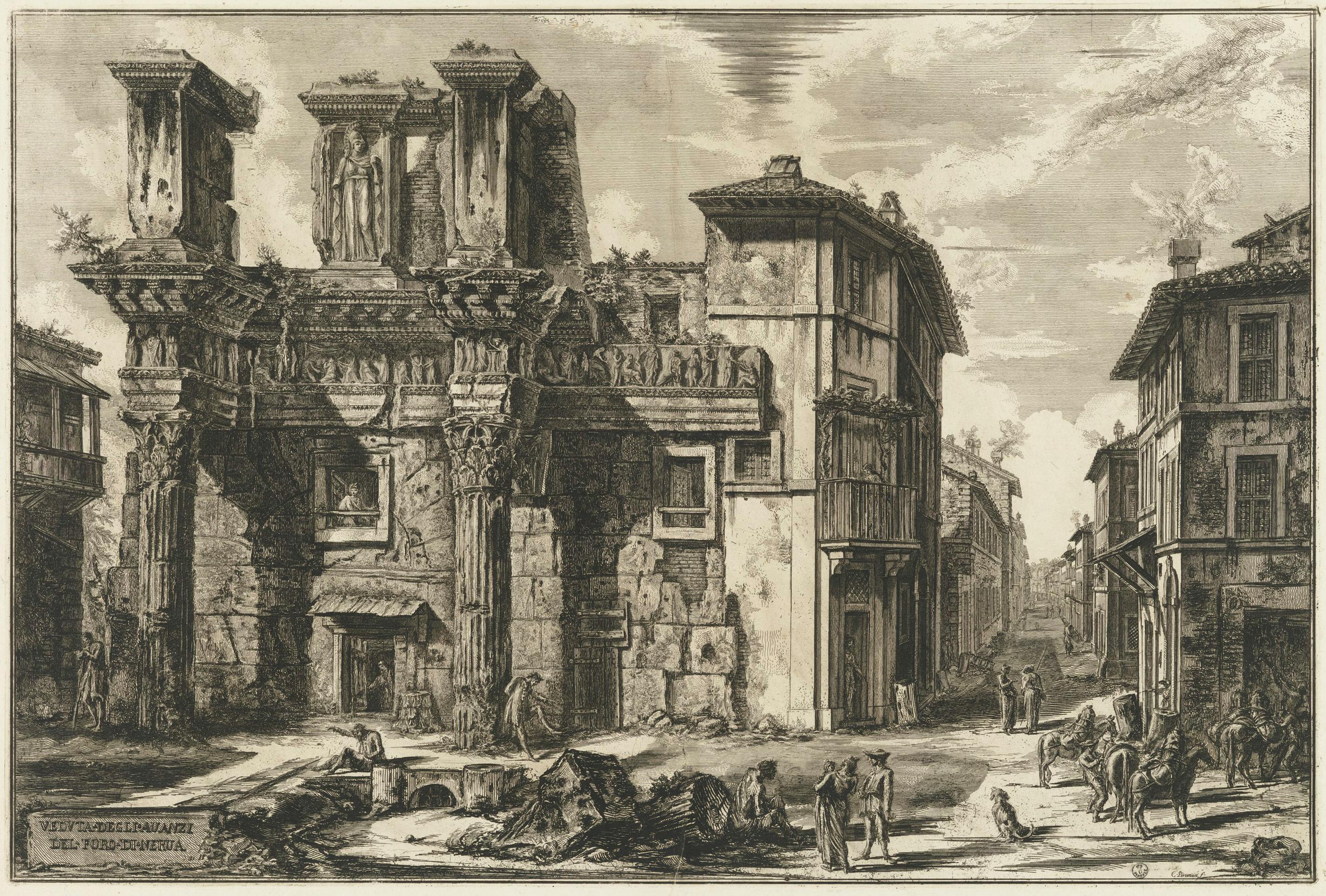Ruins of the Antonine Baths, in ‘Views of Rome’
Giovanni Battista Piranesi (Venice 1720 – Rome 1778)
No artist has been able to represent the manifold settings of Rome’s major ancient and modern monuments better than Piranesi, who does so with the unifying vision of a specific interpretation of space. The ruins, modern villas and urban views are integrated with changing scenes of the real city, creating a report that is also a perfect souvenir. The protagonists of this view are the remains of the Forum of Nerva, the so-called Colonnacce of the Temple of Minerva, which even today, at the Imperial Forums, support a fascia with a bas-relief frieze and statue of the goddess. The structure stands like a mysterious wreckage, half submersed by the waned grandeur that has now become home to craftsmen. With skilful visual expedients, Piranesi turns it into a perfect theatrical backdrop that breaks through, on the right, into the narrow perspective of a street, an axis in the urban setting, later gutted by urban demolition and at the end of which, there is a glimpse of the Colosseum. It can be interpreted as the sublime representation of the decay of the ancient city among the modern shanty houses, workshops, brothels and verandas, the image reflects the meaning of the inextricable overlaying of ancient and mediaeval urban layers in their natural continuity. Piranesi is able not only to convey the poignant sense behind the ruins, but also the story dictated by the singular capacity to create an evocative atmosphere and a precise location, combining observation and archaeological studies with a boundless imagination.
